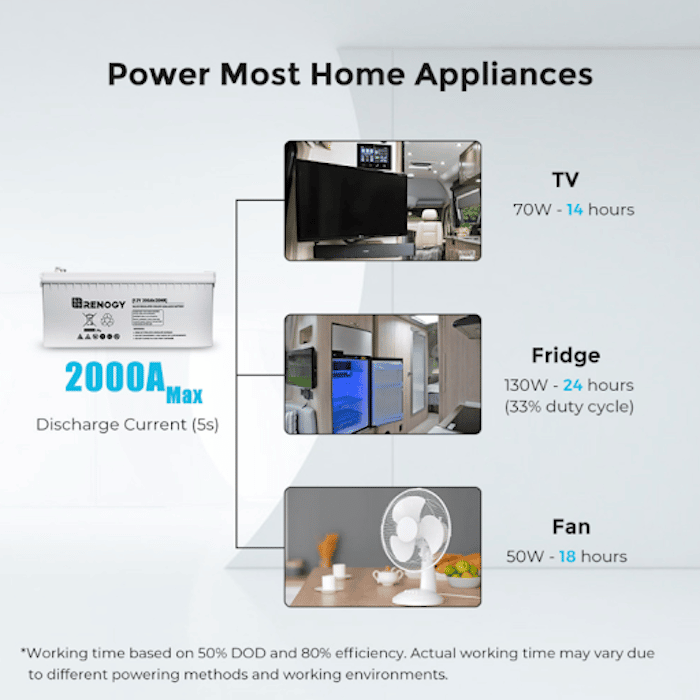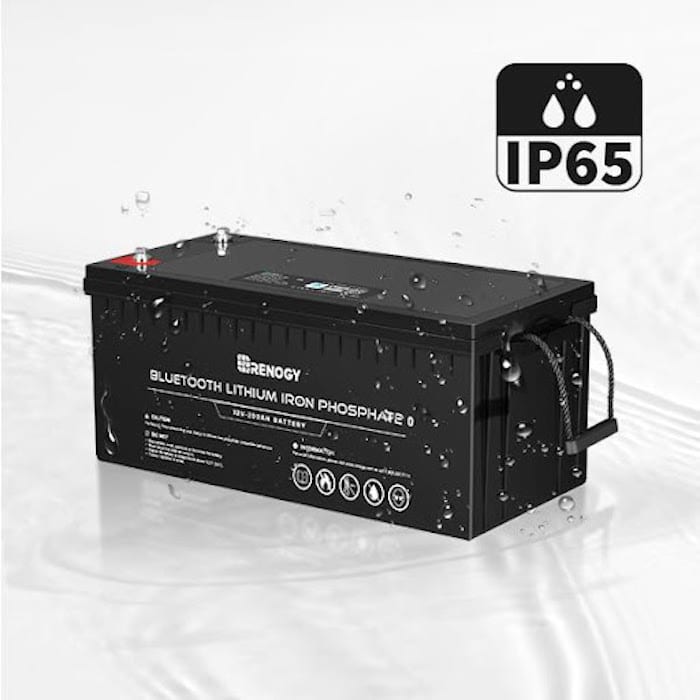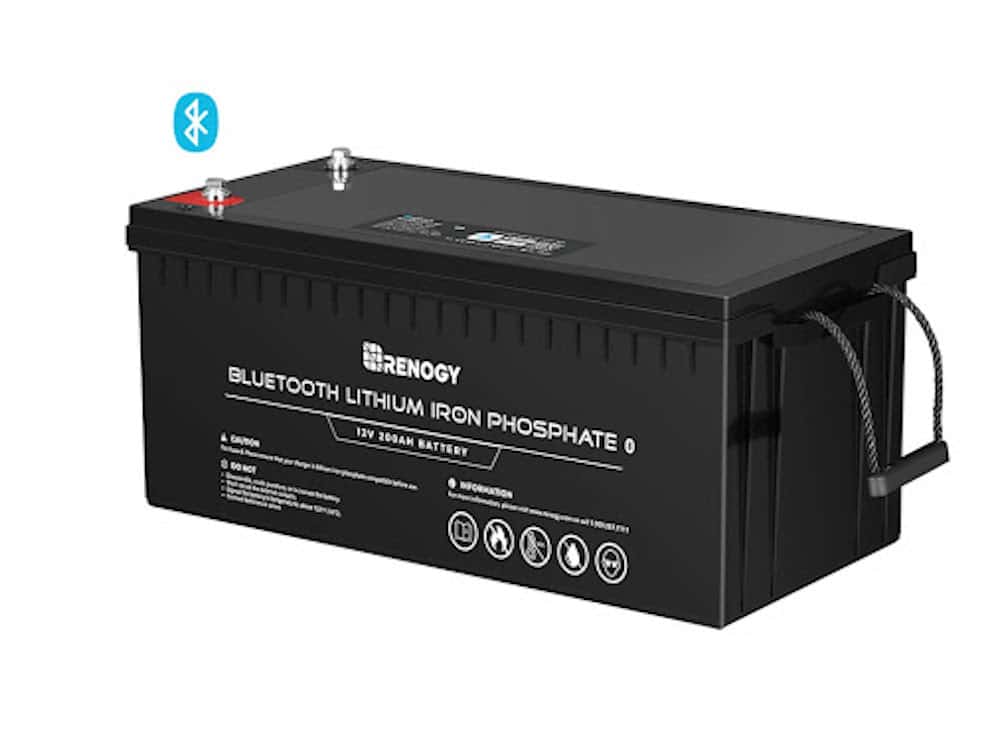Solar and material handling equipment are usually powered by deep cycle batteries. It is a complex technology that is evolving rapidly.
About Deep-Cycle Batteries
Deep-cycle batteries (Take 12 volt deep cycle battery for example ) are reusable chemical energy storage devices designed to provide steady power over an extended period of time, and to be fully discharged and recharged multiple times. Although they are close cousins of the ordinary car battery, they have different characteristics:
Car batteries are designed to deliver a brief burst of intense power and then return to charging.
This distinction is important, because using a car battery in equipment designed for deep cycle batteries–or vice versa–can have quite costly consequences.
There are several types of deep cycle batteries, with different chemical compositions and internal structures.
Flooded lead-acid batteries
These batteries, also known as wet cells, are based on lead-acid chemistry discovered in 1859 by Gaston Planté, and are also the oldest form of rechargeable battery. They comprise electrodes (lead plates) immersed in an electrolyte (a mixture of distilled water and sulfuric acid), in an unsealed casing. Although cheap and simple, lead-acid batteries are increasingly being abandoned in favor of more modern types.
Advantages :
– Cheap
– High surge current
– Simple design allows for easy troubleshooting and repair
Disadvantages:
– Requires regular maintenance and topping up with distilled water.
– The unsealed case must be kept upright, otherwise the electrolyte will leak.
– Very heavy compared to the amount of stored energy (low energy density).
– Emits explosive hydrogen during charging, which requires good ventilation.
– Must be shipped as dangerous goods
The need to safely vent hydrogen while charging lead-acid batteries is the primary reason for the vents and grills found on older battery-powered equipment.
Sealed AGM batteries
Sealed Absorbent Glass Mat AGM batteries use the same chemistry as flooded lead-acid batteries, but instead of a pool of acidic water, the electrolyte is made up of acid-soaked fiberglass mats sulfuric. The housing is completely waterproof except for a pressure relief valve. This results in a compact, maintenance-free battery ideal for the military applications for which it was originally developed.

Advantages :
– Lighter and smaller than flooded lead-acid batteries for the same capacity.
– No regular maintenance or refilling is required
– The low internal resistance allows very fast charging, with reduced energy loss.
– Waterproof case allows batteries to be used, stored or transported in any orientation.
– No hydrogen emissions in normal use, reducing ventilation requirements.
– Slow self-discharge rate, suitable for long-term storage.
– It is not necessary to ship them as dangerous goods.
– Most common type of deep cycle battery
Disadvantages
– More expensive than flooded lead acid batteries
– Charging too quickly or overcharging can damage the battery.
– Relatively difficult to diagnose or repair.
– Very heavy, with low energy density
Sealed GEL batteries
Sealed GEL batteries are another type of lead-acid cell, with a semi-solid “GEL” electrolyte. Like AGM batteries, they have a sealed casing, can be used in any orientation without leaking, and normally do not release hydrogen. However, they can be damaged by improper charging.
Victron energy uses smart digital chargers to protect the GEL batteries of its solar products.

Advantages
Batteries small, robust, extremely reliable, requiring no regular maintenance.
The sealed case allows the batteries to be used, stored or transported in any orientation.
Can withstand very deep discharges without being damaged.
No hydrogen emissions in normal use, reducing ventilation requirements.
Very slow self-discharge rate, around 3% per month, suitable for long-term storage.
It does not need to be shipped as dangerous goods.
More resistant to shocks, vibrations and temperature variations than other types of lead-acid batteries.
Disadvantages
Typically 30% higher cost than equivalent lead acid batteries.
Can be permanently damaged by improper charging
Relatively difficult to diagnose or repair.
Very heavy, with low energy density
Sealed GEL batteries are the most expensive type of lead acid battery, and generally the most robust. Solaire products are supplied exclusively with this type of battery.
Other types of deep cycle batteries
In addition to those listed above, other deep cycle batteries are available with different internal chemistries. The best known is lithium phosphate battery – the new lightweight and powerful batteries used in cell phones and electric cars. Although deep-cycle lithium-ion batteries are available for industrial use, they are rather prone to fires and their cost is generally not yet low enough to compete with lead-acid batteries.
Understanding battery characteristics
Even the longest lasting battery will eventually need to be replaced – and since deep cycle batteries are expensive, it helps to understand the different ways to rate and compare them.
Here are the four most common indicators:
Amp-hours
The first number most people look for is ampere-hours (Ah), which expresses the total amount of chemical energy the battery can store and release as electricity. Amp-hours can be understood simply as the amount of time the battery will operate before needing to be recharged.
A multimeter can be used to check the voltage generated by a battery.
Another important measurement is voltage (V), which indicates the electromotive force – or “power” – of the current supplied by the battery. Like most electrical systems, solar products are designed to work with a particular voltage and will be damaged by a higher current. It is essential when replacing batteries to ensure that the voltage is correct.
C-index
The capacity of a battery actually varies according to its use, another useful indicator is the C index.
Simply put, the C rating defines how long a battery needs to be discharged, in order to deliver its rated capacity. A 10Ah battery with a C rating of 1C will deliver 10Ah in 1 hour, but less power if discharged faster, and more power if discharged slower.
Although the C index refers to time in hours, it is an inverted unit – a 2C index means 30 minutes, and a 0.2C index means 5 hours. This is often simplified by using a division operator to re-invert the unit, so C/2 means 2 hours, and C/20 means 20 hours. Most deep cycle lead acid batteries are designed to discharge their rated capacity in 20 hours which can be expressed as 0.05C or C/20.

Battery Life Comparison
Batteries are sometimes rated by their lifespan, which is the number of times they can be discharged and recharged without losing more than 20% of their capacity. The most common reference is the IEC 60896 standard, which is based on a repeated deep cycle of 100% discharge/recharge. Although deep cycle batteries are not normally used in this manner, it is a good indicator of their likely longevity.
Very often, identical batteries have different lifespans, which is useful when comparing batteries from different manufacturers or when choosing a battery for a particular application.
These products are supplied with sealed GEL batteries, typically 21Ah 12V C/20. They are extremely durable, but if one of them fails, it must be replaced with a battery identical to that supplied by solar energy. If you must use a generic battery, make sure it is a sealed GEL battery with the same amp-hours, voltage, and C-rating as the original battery. Never mix old and new batteries, or batteries of different types.
Battery maintenance
Although sealed lead-acid batteries require little maintenance, their lifespan can be significantly extended by following a few simple rules.
Batteries should not be regularly discharged below 20% of their capacity, as recharging a deeply discharged battery generates heat and accelerates sulfation, which damages the electrodes. Increasingly, automatic circuit breakers are being used to prevent over-discharge.
Stored batteries discharge slowly and need to be recharged occasionally to prevent them from fully discharging, which will cause sulfation and damage the battery. The sealed GEL batteries used by Nrjsolaire in solar energy in Senegal and have a very low self-discharge rate of around 3% per month, which means they can be safely stored for two years without recharging. . Other types of batteries need to be charged more often.
Lead-acid batteries must be charged properly. Charging too quickly or overcharging may not only damage the battery, but also cause acid leakage, short circuit, hydrogen fire or battery case explosion. It is always recommended to use an intelligent digital floating charger with automatic current and temperature regulation, such as the on-board chargers fitted to the products.
Flooded lead acid batteries require additional checks and maintenance, but are no longer common in industrial equipment.
For most modern deep-cycle batteries, that’s all there is to it. Follow these simple rules and your battery will give you hundreds of cycles and many years of trouble-free service.


